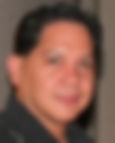Why the Philippines couldn’t be a US state
- By Zaldy Dandan
- Jun 11, 2020
- 4 min read

Saipan — On June 12th, the Philippines will celebrate the 122nd anniversary of its declaration of independence. But for one of my Filipino-American friends, it’s a day that should live in infamy. He also hates the Filipino patriots who fought and/or campaigned successfully for Philippine independence. “The Philippines,” he said, “could have been a U.S. state if not for those [beep] [beep] [beep].”
To be sure, that “missed opportunity” for American statehood is one of the Philippines’ biggest historical “what ifs.”
There was, however, no such opportunity. The Americans did not want to grant statehood to an archipelago over 8,000 miles away and inhabited, in 1939, by 16 million “colored people” — at a time when natural-born but non-Caucasian Americans were still being oppressed and repressed by their own government in the U.S.
In those days, moreover, Filipinos themselves were demanding “immediate, absolute and complete independence.” In all the elections held by the U.S. insular government in the Philippine Islands, pro-independence candidates were triumphant. The first political party in the American colony was the Partido Federalista, which favored American statehood. But the Federalistas were as popular as gonorrhea. They had to rename their group “Partido Nacional Progresista.”
In the election for the first Philippine Assembly in 1907, the two competing parties were the Nacionalistas, who were for immediate independence, and the Progresistas who called for eventual independence. The Nacionalistas won 59 of the 80 Assembly seats.
Why was the U.S. in the Philippines anyway?
In 1898, America “bought” the Philippines from Spain because the U.S. wanted a piece of the action in China, which was less than 2,000 miles away from Las Islas Filipinas.
Sen. Henry Cabot Lodge of Massachusetts said at the time: “We must on no account let the islands go. We hold the other side of the Pacific, and the value to this country is almost beyond imagination.” His fellow Republican, Sen. Albert J. Beveridge of Indiana, was more melodramatic. “The times,” he said, “call for candor. The Philippines are ours forever, territory belonging to the United States, as the Constitution calls them. And just beyond the Philippines are China's illimitable markets. We will not retreat from either. We will not repudiate our duty in the archipelago. We will not abandon our opportunity in the Orient. We will not renounce our part in the mission of our race, trustee, under God, of the civilization of the world. And we will move forward to our work, not howling out regrets like slaves whipped to their burdens, but with gratitude for a task worthy of our strength, and thanksgiving to Almighty God that He has marked us as His chosen people, henceforth to lead in the regeneration of the world.”
Economic considerations, in short, influenced America’s decision to seize control of the Philippines. But the same considerations were also behind the eventual U.S. decision to set free its little brown brothers (and sisters). American agricultural interests, for example, did not want to compete with the duty-free sugar, coconut oil and cordage imported from the P.I. As Sen. Huey Long of the sugarcane-producing state of Louisiana would put it, “We do not need to worry about the Filipinos. The Lord put them over there in a country where they do not need to have shoes…. We need to protect our own sugar industry. That is why we need to get them [the Filipinos] out of the way. We have no business being hooked up with them.”
Frank Hindman Golay in his 1997 book, “Face of Empire: United States-Philippine Relations, 1896-1946,” wrote that mutual free trade did not create an “American interest capable of offsetting the growing apathy of Americans generally toward the colony. Only an American economic interest of unprecedented magnitude could halt the growing sentiment [among U.S. politicians, especially Democrats, and business interests] for [Philippine] independence….” American dairy farmers, Golay noted, were traditionally Republicans, but they, too, were “becoming disenchanted with competition from Philippine coconut oil and receptive to the idea of [Philippine] independence as a means of escaping that competition.”
In 1928, Republican Congressman Richard Welch of California introduced a bill to prohibit Filipinos from immigrating to the United States. American organized labor backed the measure.
Philippine statehood, in other words, had a huge price tag. Uncle Sam wasn’t buying. And the Filipinos at that time weren’t selling.
Now imagine if the Philippines were a U.S. state. Currently, California with a population of over 39 million has 55 electoral votes. With over 100 million people, the Philippines would be the ultimate electoral prize in this year’s U.S. presidential race. Heck, Duterte could end up as Trump’s running-mate.
However, with over 7,000 islands, the faraway P.I. — and not America’s border with Mexico — would also be the U.S. military and immigration authorities’ worst nightmare.
As early as 1910, former President Theodore Roosevelt was already convinced that the Philippines was indefensible, particularly against a Japanese invasion. Today, compared to pre-World War II militarist Japan, the nuclear-armed People’s Republic of China is a behemoth with the largest active-duty military force in the world. China also considers the West Philippine Sea as Chinese territory.
Happy Independence Day my brown brothers and sisters!
Zaldy Dandan is editor of the NMI’s oldest newspaper, Marianas Variety, and is the author of three books available on amazon.com


